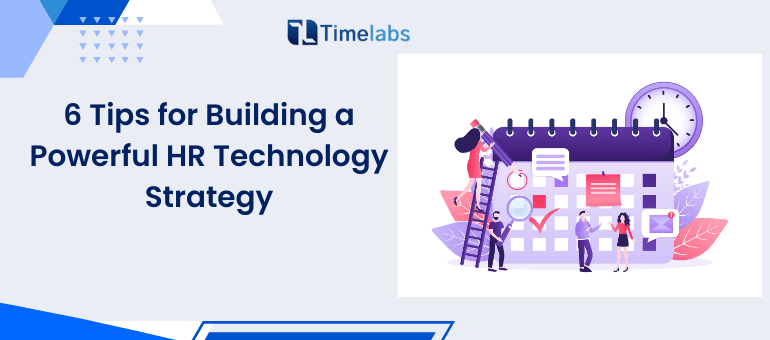As a CHRO or HRIT Manager, one of the biggest challenges you are presently facing is the digitalization of human resources operations. Digitalization must now be implemented to meet the objectives of luring and keeping talent, reducing expenses, gaining a competitive edge, and enhancing HR effectiveness.
This should be reflected in each key stage of the employee lifecycle, from hiring through onboarding, engagement, and ultimately offboarding.
Here are six tips for building a HR technology strategy:
1. Assess your current HR technology environment
Examine the technology you are using right now to see if it satisfies all of your needs, both present and future. This is the first step in creating an effective HR strategy, which entails extensive analysis of the current HR technology environment. Keep an eye out for new chances to use technology to automate and streamline work processes in all facets of the HR function.
You should estimate the required expenditure and compare it to the current price of HR technology if switching from your current technology solution to another emerging provider is necessary. If necessary, switch to another emerging technology provider instead of your current technology option. Even before investing in new technology, you should be positive that you fully comprehend its potential and limitations.
2. HR Technology Optimization
Most businesses usually use HR technology applications that are difficult to use because they are poorly integrated, dated, and have functional gaps. This impacts the approval by the workforce.
Because of this, companies should look for ways to update and improve the technology they already use and implement new technologies as they become available. Implementation alone is ineffective for human resources (HR) technology deployment. When managing a diverse collection of HR technologies, workers’ preferences, stakeholder expectations, and current company operating models must all be considered.
3. Use information technology to help you create a digital workplace plan
HR department managers must understand that automating HR processes is more than an IT endeavor. Instead, a plan for HR technology should be developed in collaboration with other departments, such as information technology.
Collaboration with information technology aids in offering a new perspective on how current business problems can be solved using the most suitable technological solutions. By more carefully choosing the applications that will support the digitization of HR processes, CHROs can profit from IT’s technological knowledge.
4. Ensure You Stay Up To Date With The Latest HR Technology Trends
In the area of human resources management, major technological advancements have occurred recently. The most noteworthy are virtual companions, artificial intelligence, machine learning, and natural language processing. Furthermore, a lot of new technologies are evolving very rapidly. It would help if you had a thorough grasp of the state of development and acceptance of these technologies to make an informed choice.
Today, we observe businesses utilizing various technologies, including robots and cutting-edge intranets, to enhance the employee experience and cut costs. An employee’s life cycle includes several stages, starting with recruitment and onboarding and continuing through stages like engaging the employee, promoting retention, and offboarding. Chatbots, one of the most popular uses of artificial intelligence, are used at each stage. Employees can self-complete HR-related duties with chatbots, including requesting paid time off (PTO), accessing HR policy documents, and asking questions, among other things.
5. Agile product development that incorporates gamification
According to a Gartner report, the two HR capabilities CHROs and HRIT managers need to adopt to get ready for the future of work are gamification and agile product development. Agile product development, according to Gartner, is a quick method to deliver HR solutions in response to employees’ constantly changing needs. Estimates indicate that fewer than 30% of HR divisions have implemented either of these strategies. On the other hand, using gamification to make HR processes more interesting is not a good idea. According to the heads of human resources, the only processes that should be gamified are those that will lead to the acquisition of a unique value that cannot be obtained through any other technical means.
6. Establish Strategic Partnerships Utilizing the Right Vendors
Learn the specifications your business has set forth, then order them by importance. Obtain comments from the legal and IT departments amongst the other agencies.
To ensure that digitalization helps the organization achieve its goals, the heads of HR must implement the most promising technologies and optimize, manage, and assess them based on business outcomes. Another crucial stage on the road to success is selecting the right vendor to work with.
Please don’t hesitate to contact one of our HR technology specialists to arrange a customized consultation if you need help developing your HR technology plan or researching new technologies.



